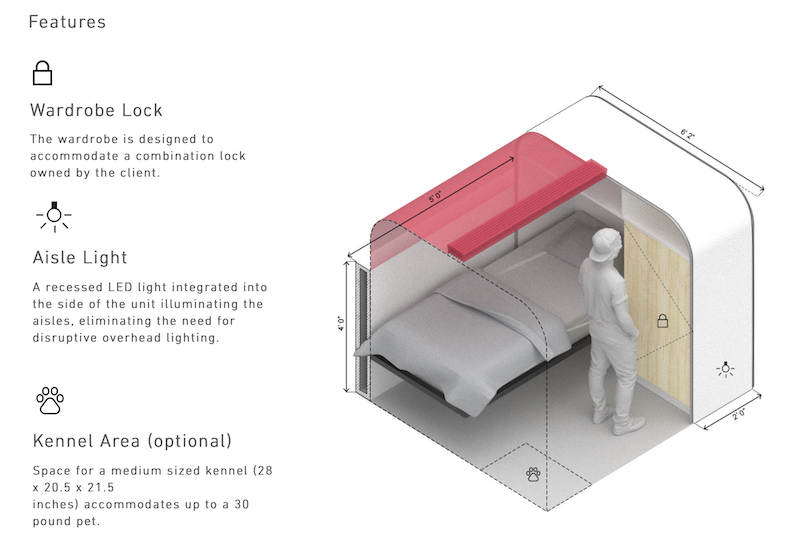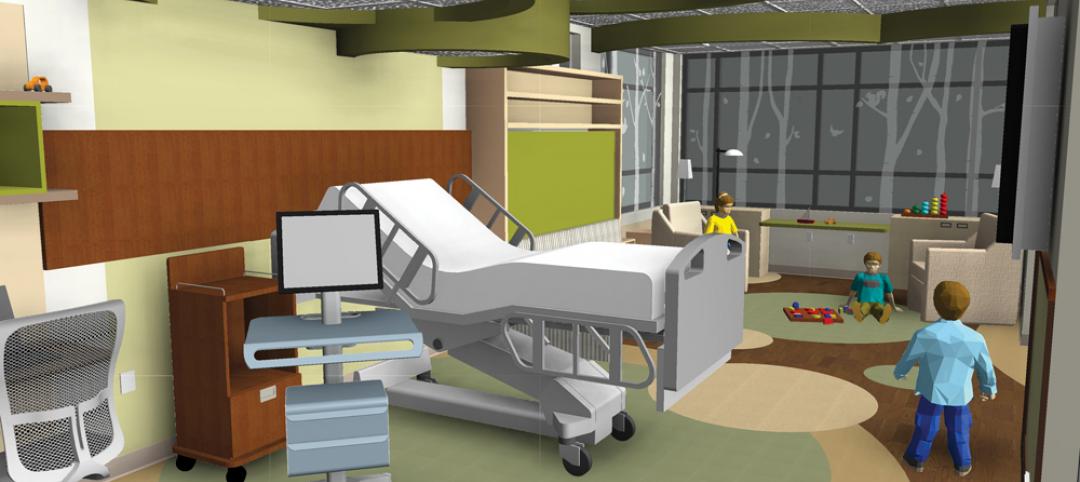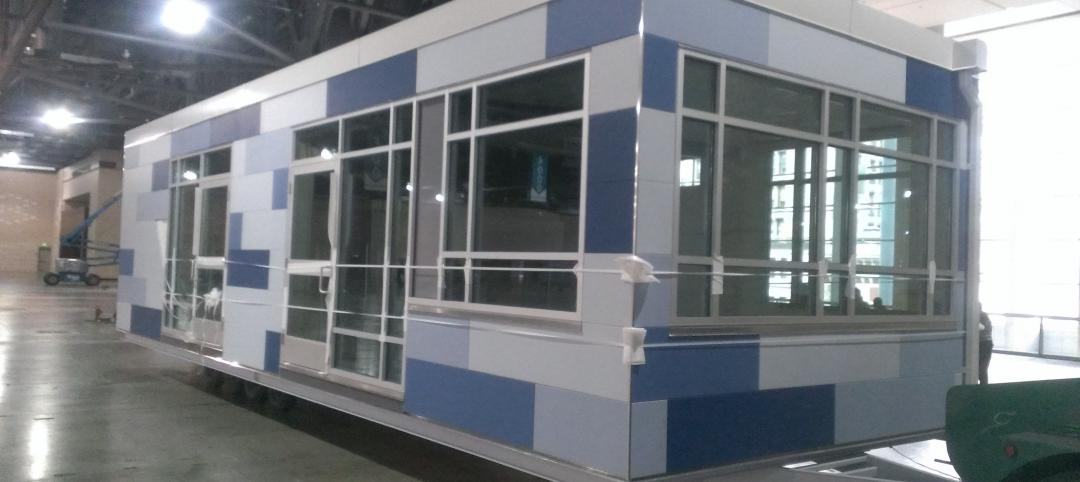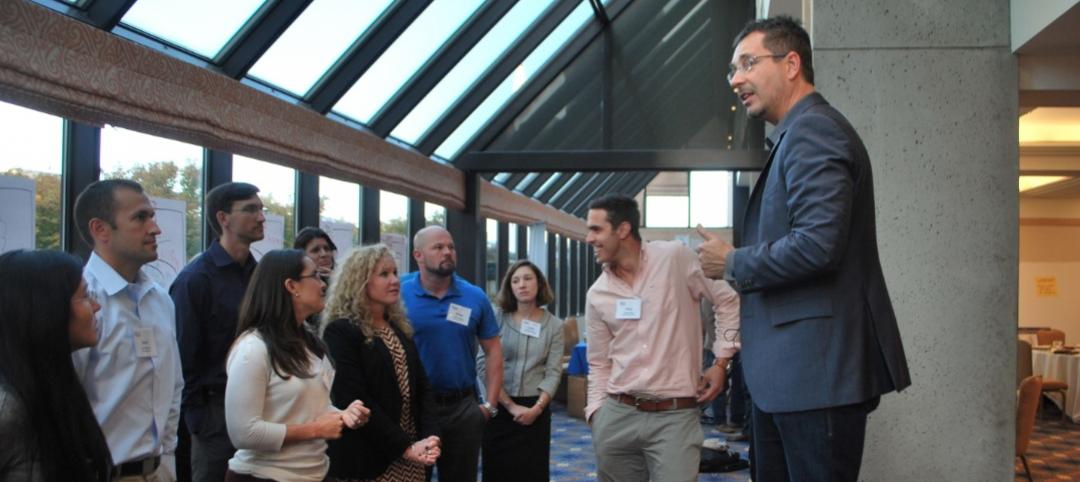On any given night, more than 500,000 Americans are homeless. Of that total, more than one-third of those homeless—35%—is unsheltered. And 47% of all unsheltered homeless live in California, which is four times higher than the state’s 12% share of the U.S. population.
Those estimates come from “The State of Homelessness in America,” which the White House’s Council of Economic Advisors released in September. That report notes that in the last two years, homelessness in Los Angeles alone had risen by 12% to more than 59,000 people. An estimated 44,000 of L.A.’s homeless eschew its shelter system, often preferring instead to live in outdoor tents that offer them more privacy and security.
Los Angeles isn’t oblivious to this situation. Proposition HHH, approved by voters in 2016, allocates $1.2 billion to build thousands of “supportive housing” units over the next decade. Los Angeles Mayor Eric Garcetti has also initiated a plan called A Bridge Home, which would help the homeless get into temporary housing in their preferred neighborhoods until they can be connected with a permanent home. The Mayor’s budget includes in excess of $460 million for supportive housing, bridge housing, and services. The state kicked in another $219 million this year.
Los Angeles is committed to creating 1,600 new units for the homeless by July 2020, and is considering a number of options, including DOME, a modular, unitized system that Perkins and Will designed specifically for interim and emergency housing.
The unit, which ranges from 47 to 52 sf, includes a bed with room for storage underneath, a lockable wardrobe, partitions, access to an electrical outlet, and an optional fabric canopy that can be pulled down for additional privacy. A person can stand inside DOME. And the design allows for an optional medium-sized kennel that can accommodate a pet up to 30 lbs.
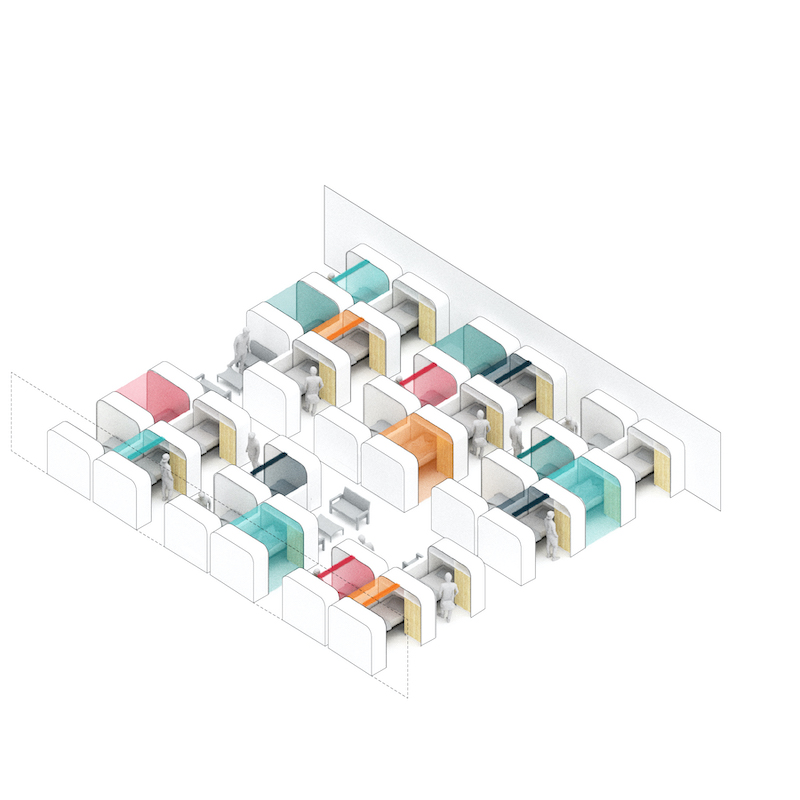
DOME units' installation maximizes space.
Yan Krymsky, design director of Perkins and Will's Los Angeles studio, calls DOME “a sleeping cabinet.” DOME’s microsite provides details about the unit and its installation, which slots together onsite and is collapsible; 32 units could fit onto a 53-ft-long trailer. P&W estimates DOME’s cost at $4,749 per unit.
A prototype of DOME, built by Shield Casework in Kansas City, Mo., has been installed in the Los Angeles Architecture & Design Art Museum, where interested parties can evaluate its design, construction and utility, and offer comments.
Krymsky says that P&W has also been talking with shelter operators such as the Salvation Army and People Assisting the Homeless (PATH) to gauge interest in DOME and to see if they are willing to test it out. DOME’s design is flexible enough to bend to different operators philosophies about partitions (some like them, others don’t, for security reasons). The prototype could also be made bigger (some operators prefer longer beds, for example.)
P&W got interested in this project when it was retained by the city to do research on interim housing. As such, it learned that this kind of housing typically provides extended-stay shelter, anywhere from six months to two years. P&W also learned that there wasn’t much out there that could provide bridge housing. “For us, that’s unusual in other typologies,” says Krymsky.
Shield Casework, a five-year-old company, specializes in making products using acrylic solid surface. Its two primary markets are healthcare and sports, for which it prefabricates everything from headwalls to custom lockers.
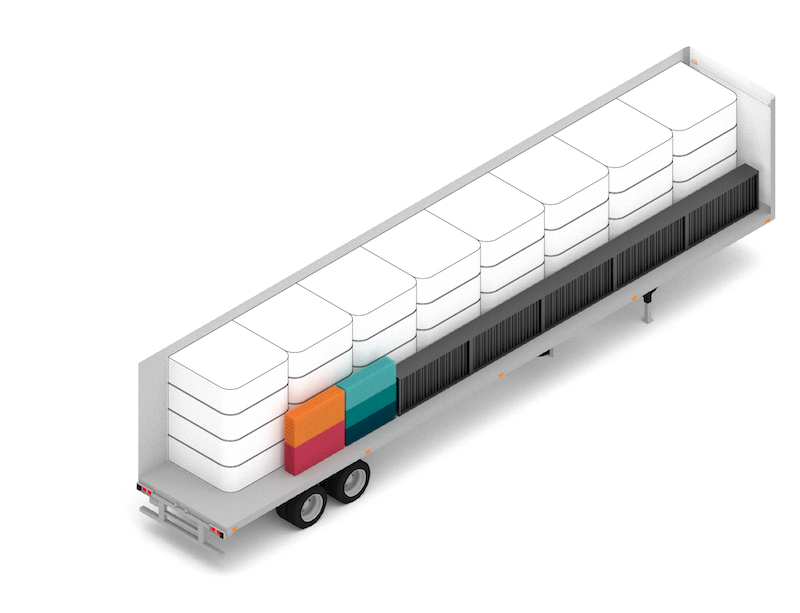
32 DOME units can be shipped on a single 53-ft trailer.
Stephen Hopkins, Shield’s president, says that he and Krymsky had worked on previous projects, including a dorm-pod concept for the University of Utah that didn’t get built for code reasons but set the stage for the two companies’ alliance on DOME.
“For us, the challenge was how do we hone the design to its basic components” so that it could be produced simply and efficiently, says Hopkins, who is an architect.
Neither he nor Krymsky see DOME as a silver bullet for solving homelessness, given the magnitude of the problem. “It’s a Band-Aid, but one we’re happy to provide,” says Hopkins. If demand for DOME were to take off, Shield has the capacity to produce 1,000 or so units over a six-month period without disrupting its other orders.
Krymsky anticipates high interest in DOME, not only in L.A. but possibly from other cities desperately seeking housing options. Perkins + Will is also considering other housing designs, such as tiny houses (which California codes currently don’t allow). “Our frustration [with tiny houses] is that their pricing is total confusion,” with the lowest-priced model with electricity he’s seen costing around $20,000.
Related Stories
| Nov 19, 2013
Top 10 green building products for 2014
Assa Abloy's power-over-ethernet access-control locks and Schüco's retrofit façade system are among the products to make BuildingGreen Inc.'s annual Top-10 Green Building Products list.
| Nov 15, 2013
Pedia-Pod: A state-of-the-art pediatric building module
This demonstration pediatric treatment building module is “kid-friendly,” offering a unique and cheerful environment where a child can feel most comfortable.
| Nov 14, 2013
Behind the build: BD+C's 'Pedia-Pod' modular pediatric patient unit at Greenbuild 2013 [slideshow]
Next week at Greenbuild, BD+C will unveil its demonstration pediatric patient unit, called Pedia-Pod. Here's a behind-the-scenes look at the construction of this unique modular structure.
| Oct 30, 2013
11 hot BIM/VDC topics for 2013
If you like to geek out on building information modeling and virtual design and construction, you should enjoy this overview of the top BIM/VDC topics.
| Oct 28, 2013
Urban growth doesn’t have to destroy nature—it can work with it
Our collective desire to live in cities has never been stronger. According to the World Health Organization, 60% of the world’s population will live in a city by 2030. As urban populations swell, what people demand from their cities is evolving.
| Oct 23, 2013
Some lesser-known benefits of metal buildings
While the durability of metal as a construction material is widely recognized, some of its other advantages are less commonly acknowledged and appreciated.
| Oct 18, 2013
Meet the winners of BD+C's $5,000 Vision U40 Competition
Fifteen teams competed last week in the first annual Vision U40 Competition at BD+C's Under 40 Leadership Summit in San Francisco. Here are the five winning teams, including the $3,000 grand prize honorees.
| Oct 18, 2013
Researchers discover tension-fusing properties of metal
When a group of MIT researchers recently discovered that stress can cause metal alloy to fuse rather than break apart, they assumed it must be a mistake. It wasn't. The surprising finding could lead to self-healing materials that repair early damage before it has a chance to spread.
| Sep 19, 2013
What we can learn from the world’s greenest buildings
Renowned green building author, Jerry Yudelson, offers five valuable lessons for designers, contractors, and building owners, based on a study of 55 high-performance projects from around the world.
| Sep 19, 2013
6 emerging energy-management glazing technologies
Phase-change materials, electrochromic glass, and building-integrated PVs are among the breakthrough glazing technologies that are taking energy performance to a new level.


